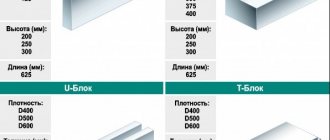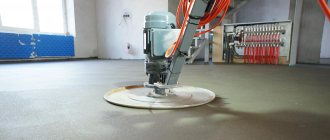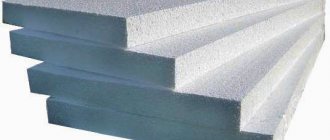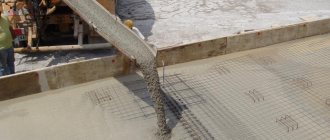No Frost technology: operating principle
A refrigerator with a drip cooling system has a special reservoir into which condensing excess moisture flows down the back wall. The rear wall is cooled by a compressor that operates at certain intervals. Moisture flowing down a cold wall turns into frost. Over time, the layer of frost becomes thicker, and to remove it, it is necessary to periodically defrost the device.
Translated from English, “No Frost” literally means “without frost.” In fact, there is frost in such refrigerators, but it is invisible to the user. Frost formation occurs in the cooling evaporator, hidden behind the plastic panel on the rear wall of the case. In some models, the cooler is located between the refrigerator and freezer compartments.
The principle of operation of the No Frost system is similar to the operation of an air conditioner: the air, which is cooled in the evaporator, is supplied to the room using a fan. In a refrigerator, a fan directs cooled air into special channels, from which it is evenly distributed throughout the refrigerator and freezer compartments.
Every 10-16 hours (time depends on the model), the automatic defrosting system turns on. The frost that appears on the evaporator begins to melt when the heating elements are activated. The compressor is switched off. And the water formed as a result of melting enters a container located on the refrigerator compressor. Upon contact with a hot compressor, it evaporates, and after 10-16 hours a new portion of melt water enters the container, which evaporates in the same way.
No-Frost refrigerators are equipped with a cooler, due to which the air constantly circulates in the refrigerating chamber and, passing through the evaporator, is freed from moisture.
Due to the operation of the fans, cold air is evenly distributed inside the chamber, so the temperature on the top and bottom shelves of the refrigerator is the same. In conventional devices with a drip system, the temperature difference in the upper and lower parts of the chamber can vary between 3-6 ˚С.
How the no frost system works
- built-in fans create movement of cold air inside the chamber;
- air currents instantly dry the moisture accumulating on the walls;
How the know frost system works
Frost does not have time to form, and snow drifts do not occur in such a refrigerator.
The operating principles of the no frost system were used in the middle of the last century for freezer compartments. There are many modifications that are used in designs of different brands. Let's look at some of them.
Types of system
The system can be either complete or partial. The first type combines devices that operate entirely on No Frost - both in the freezer and refrigeration compartments. Such systems are divided into independent, multi-level and combined. Partial technology is present only in the freezer, while the refrigerator compartment operates using drip equipment.
Frost Free
When buying a refrigerator, some housewives are faced with a name such as Frost Free or Fresh Frost Free. What does this name mean and how do these refrigerators differ from the classic No Frost?
You can fix a blender at home - step-by-step instructionsKitchen countertops: tips on how to choose, types and ideas
The best refrigerators: ratings, good models for today 2021
Refrigerators of the Frost Free system are a combined option. With this technology, the refrigerator compartment and freezer are separated from each other, but nevertheless operate from the same compressor.
The freezer is most often located at the bottom and operates using the No Frost system. But in the upper chamber a drip cooling system is supposed. The temperature in the cooling chamber of such a refrigerator varies depending on the altitude and ranges from +5 to +8 degrees Celsius. Humidity is maintained at 70–80.
Full No Frost
No Frost in refrigerators with this technology means that these devices have autonomous evaporator defrosting systems in low- and medium-temperature zones. Thus, the only difference between refrigerators of this type is the quality of the No Frost technology.
Total No Frost
If the refrigerator has the Total No Frost designation, it means it is equipped with fans with an extended function. The device can purify the air and remove fumes produced by food. This helps prevent the formation of frost, unpleasant odors and mold.
Food in such a refrigerator is stored in tightly closed containers to prevent them from drying out.
Thus, the difference between the systems described above lies only in the degree to which No Frost technology is used. If there is a Low Frost designation, it means that the system can operate without removing moist air. And the Smart set-top box informs the user about the presence of the super-freezing function, glass shelves and smooth walls.
Neo frost
Neofrost in the refrigerator is a system created by the famous company Beko. A distinctive feature of this technology is the complete isolation of all compartments of devices with Full No Frost from each other. Different types of food freeze faster with Neofrost.
Which is better, drip system or No Frost?
Drip moisture removal is more common than No Frost. What is better, what are the features of the processes? The drip system is designed simply; the evaporator is also located outside the chamber wall, but cools it. As a result, condensation accumulates and flows down in drops. For this reason, defrosting is called “crying”, Direct Cool.
The system is adjusted so that the wall is not covered with ice. It is necessary to check periodically whether the condensate drain hole is clogged. Humidity is maintained in the chamber. And ice does not form due to the cyclic operation of the compressor.
Advantages of drip defrosting:
- affordable price;
- large selection of models;
- internal chambers are larger than with No Frost;
- less energy consumption;
- quiet work.
The drip system is not used in the freezer for obvious reasons.
What does it mean to use a No Frost system in a refrigerator? What will this give to an eternally busy person? If the refrigerator is equipped with “dry sublimation”, you don’t have to look into it, worrying that the hole for removing water is clogged. The No Frost function is freedom from regular defrosting of the freezer, which certainly happens with a drip system. Wondering what this is, Total No Frost? Uses advanced fan functions. The Free Frost label means a freezer without frost, and a refrigerator with a weeping wall. What does Full Frost mean - all the chambers in the refrigerator are No Frost. The Smart prefix will mean that the walls are smooth, the shelves are glass and the refrigerator has a super freezer.
What is the difference between No Frost defrosting and a drip system? Fan and condensate removal system. The Low Frost device in the freezer operates without removing humid air. In both systems, the evaporators are located outside the chamber walls. If you need to dry the air, you need to use No Frost, which means without frost. And if you need humid air in the refrigerator, let the wall in front of the evaporator cry.
Pros and cons of the system
Any technique or technology has both positive and negative sides. Let's look at the pros and cons of No Frost refrigerators.
No Frost: 9 Advantages of the System
- There is no need to constantly defrost the refrigerator. It is enough to produce it 1-2 times a year;
- Forced circulation ensures the same temperature throughout the entire volume of the chamber;
- Food placed in the refrigerator cools faster, and the food in it heats up less when the doors are opened;
- The No Frost system allows you to effectively use dry freezing chambers;
- After opening the doors or placing warm or hot food inside, the temperature is quickly restored;
- The absence of frost and ice in the freezer significantly increases its operating efficiency and useful volume;
- Humidity in the main and freezer compartments is maintained at an optimal level;
- The freshness zone can only work effectively in refrigerators with No Frost technology;
- The “Super Freeze” or “Blast Freeze” function with the No Frost system works faster and more efficiently.
No Frost: 7 Disadvantages of Technology
- The dimensions of refrigerators with No Frost technology are larger than those with a drip system with the same internal volume;
- Fans installed on the cooling circuit consume additional electricity;
- Additional electricity is consumed to cool the gap between the rear wall of the refrigerator chambers and the cooling circuit;
- Some models have a higher operating noise level than refrigerators with a drip system;
- Due to constant airflow, open products weather faster;
- The cost of No Frost refrigerators is higher than regular ones;
- Fans and heating elements are an additional risk area, so the likelihood of breakdown is higher.
Features of "No Frost" in the refrigerator
The popularity of this system is growing daily.
However, traditional drip refrigerators are still in demand. In order to understand the reason for this phenomenon, we suggest considering the advantages and disadvantages of “anti-freeze”. Pros:
- You don't need to constantly monitor them. Defrosting is carried out once or twice a year, and the rest of the time it is enough to wash it from the inside.
- Condensation can be observed periodically in conventional refrigerators. Here you will not encounter such a phenomenon.
- Food cools faster. This occurs due to “wind” cooling.
- If desired, you can set a single temperature for the entire cabinet, or choose a separate one for the “freshness zone”.
- No Frost does its job well in both the freezer and cooler compartments.
- Quick restoration of the set temperature after opening and closing the door.
- Some models have a quick dry freezing function, which is appreciated by many housewives.
No Frost allows you to cool all chambers equally.
One of the main advantages of the system is its ease of operation. There is no need to defrost monthly to get rid of a thick layer of frost. All that is required during operation is to clean the refrigerator in a timely manner.
The main task of all these design features is to create optimal intensive circulation. It will provide access to cold air even in hard-to-reach places, which contributes to uniform cooling of products. The temperature in such structures quickly recovers after closing the door.
In No Frost refrigerators, defrosting is performed using fans located inside the walls.
Minuses:
- From the outside, this refrigerator may seem spacious, but keep in mind that built-in fans create additional volume. Therefore, it turns out to be much smaller inside.
- Refrigerators equipped with such a system consume much more electricity than drip refrigerators.
- Noise insulation. This is very important because the device makes very loud noises. This is worth considering before choosing one model or another.
- Products stored in the cooling chamber dry quickly due to the cold air blowing. Therefore, it is recommended to store them in containers or special cling film.
- The price of such units is much more expensive than traditional refrigerators.
The only drawback of No Frost refrigerators is the price.
Comparison of drip and No Frost systems
Manufacturers of household appliances do not stop there and strive to create more convenient and practical devices for their customers. The next improvement to the refrigerator is the No Frost system, which confidently claims leadership in the household refrigeration industry. Let's compare both systems.
The principle of operation of No Frost is similar to drip; cooling inside is achieved by pumping refrigerant into the evaporator. But such a refrigerator is additionally equipped with a fan, which is responsible for uniform temperature distribution inside the refrigerator compartment. Due to the moving air, ice hardly accumulates on the walls of the chamber, therefore, it needs to be defrosted less often. In addition, you will not hear the sound of falling drops, and the drainage system becomes much less clogged. However, such a system is technically more complex, so if you come across an unscrupulous manufacturer, then get ready for frequent and expensive repairs of your household appliance.
TOP best multicookers: 2021 rating by priceWhat temperature should the refrigerator be?
- Rating of washing machines with the largest number of washing programs. Who to give preference to?
If you compare both systems of refrigerator operation, you can see both the advantages and disadvantages of each of them. If you are forced to choose between a drip system and No Frost, then consider the following factors.
Advantages of drip:
- reliability;
- noiselessness;
- minimal power consumption.
Flaws:
- periodic cleaning of the drainage system;
- manual defrosting of freezers;
- temperature difference in the upper and lower parts of the chamber.
Benefits of No Frost:
- minimal maintenance during operation;
- uniform temperature distribution;
- absence of an ice layer on the walls of the chamber;
- rapid restoration of low temperature after defrosting.
Flaws:
- noise during fan operation;
- large amount of electricity consumed.
Compared to No Frost models, “crying” refrigerators are more powerful and spacious - you can choose a huge model for a large family and a built-in appliance for your kitchen furniture. Moreover, products in units with a drip system are not aired due to constant air flows, which are pumped by built-in fans in No Frost devices. But you can simply carefully monitor the safety of the packaging or wrap the food in cling film - then chapping will not occur.
As you can see, there is no obvious advantage of one system over another - your choice depends solely on your preferences and wishes. Before purchasing, you should read the opinions of experts, pay attention to reviews and various ratings. However, the final choice should be based on the balance of all the advantages and disadvantages of each specific refrigerator model.
No frost or drip refrigerator - which is better?
Choosing home appliances is not an easy decision. It is not uncommon for people to be faced with the problem of which refrigerator is best to choose.
There is a wide range of modern technology on the market. Particular attention is paid to the cooling system.
Not only the functionality of the model, but also ease of use depends on this. The consumer can choose know frost or drip refrigerator.
Each has certain technical characteristics. All that remains is to decide which know frost or drip refrigerator to purchase for your home.
No Frost: myths and reality
A couple of decades ago, refrigerators with a No Frost defrosting system were much more progressive. Then the drip system could not ensure tightness inside the chambers due to the fact that the doors did not close tightly. Things look a little different now.
Unpleasant odors and rapid drying of food
Unpleasant odors do not form in a freezer equipped with a No Frost system, unless emergency defrosting occurs. In the refrigerator they can occur for the same reason or during storage of spoiled food. But the chances of this happening are less than with drip, because air exchange occurs faster and the temperature is equalized.
This type of refrigerator does not have a drain hole, so it cannot become clogged and cause unpleasant odors. Products in the refrigerator with No Frost quickly air out if stored uncovered. If you hide them in a container, there won't be much difference.
- Beko NoFrost two-chamber refrigerators: what are their features
Rating of kitchen faucets by quality, manufacturer and price
What types of kitchen dish drainers are there?
Is it necessary to defrost a No Frost refrigerator - dispelling the myths
Myth 1: A No Frost refrigerator needs to be defrosted once a year.
Above we looked at the operating diagram of No-Frost refrigerators. The ice in them defrosts automatically, so nothing can freeze anywhere in properly functioning equipment. We came across No Frost refrigerators that worked properly for 10 years, and they were never unplugged from the outlet, much less defrosted.
RemBytTech craftsmen, who have more than 15 years of repair experience, officially declare: all that is required is No Frost - periodic wet cleaning. It is enough just to remove crumbs and debris, wipe the walls and shelves of the refrigerator: this will ensure not only a neat internal appearance, but also the absence of an unpleasant odor in the refrigerator compartments. Before cleaning, be sure to unplug the refrigerator.
Myth 2: after cleaning the No Frost refrigerator from contamination, you cannot immediately turn it on; at least 1 hour must pass from the moment it was turned off.
This myth has some basis, but it is outdated. “Sofa experts” write that the reason lies in equalizing the pressure in the system. The logic is this. When the compressor is running, the freon in the condenser is under high pressure, and after turning off the motor, the pressure in the system cannot instantly equalize. In particular, increased pressure will remain for some time at the outlet of the compressor (in the discharge tube). The motor is not designed to start under such conditions: the starting torque may not be enough to move the piston against the pressure, so the compressor may jam. Blocking the motor shaft when power is supplied to the compressor, in turn, is considered a dangerous condition, since the motor windings are overloaded and can burn out. Then the compressor will need to be replaced.
If we talk about old refrigerators, then there is indeed a possibility of the situation developing according to such a scenario, which leads to a “wedge” of the motor. But only if you turn it on almost immediately. If you let the refrigerator sit for at least 5-10 minutes (and it is unlikely that wiping will take less time), no problems will arise.
Modern models are even equipped with protective relays: after disconnecting from the power supply, it simply will not allow the engine to start immediately. This way, you can plug in your refrigerator immediately after cleaning. The compressor will only start when the system is ready to start safely.
What is the difference between know frost and drip refrigerator?
So, what are know frost and drip systems, why are they needed and what is the difference? Every time you open the refrigerator, you let in warm air, which, having first turned into condensation, can finally turn into an ice coat. And if a thin layer of frost on the walls of the chamber even improves the cooling of products, then a thick layer (more than 2 mm) impairs the operation of the device, increases energy costs and can even cause breakdowns.
To prevent ice from appearing, you need auto-defrosting functions - know frost and a drip system.
- Drip system (other names Direct Cool, “crying” system) - implies the presence of an evaporator-drip collector in which the collected condensate freezes while the compressor is operating and then melts while the evaporator is slightly heated. The water then flows through the grooves into a tray at the bottom of the device and evaporates there. Unfortunately, the drip defrosting system in the freezer does not work due to the negative temperature. However, it’s not really needed here, since we don’t open the freezer very often. Of course, when the snow coat becomes large (more than 2 mm thick), the device has to be defrosted manually at least 2 times a year.
- “No frost” (translated as “without frost”) - as we have already said, this defrosting system almost completely eliminates the appearance of ice. Thanks to the fans, the refrigerator/freezer seems to “inhale” warm and humid air, cools it, and leaves water in the evaporator. It turns out that the No Frost refrigerator is always dry, it is approximately equally cold on all shelves, and the back wall is never covered with frost.
So, let's take a closer look at all the pros and cons of both systems. If you are viewing the table on a smartphone, turn it to a horizontal position so that the entire table fits into the screen area.
Types of defrosting No Frost refrigerators
No Frost technology involves automatic defrosting of the refrigerator without human intervention. Modern units are divided into 2 types:
- with partial defrosting, in which the system is placed only in the freezer (removal of frost is carried out using the drip type);
- with full defrosting - automatic defrosting occurs according to the wind type and covers both chambers.
Interestingly, some manufacturers have managed to combine wind and drip defrosting technologies in one model.
Windy type
Defrosting is carried out as follows: an evaporator is installed behind the rear walls of the chambers, onto which cooled air enters. The air flow direction is controlled by a built-in fan. The ice in such a system is able to thaw on its own, so defrosting a two-chamber Bosch unit takes less time. If there is no need for cleaning, you can defrost a No Frost refrigerator of this type without removing food. However, it is recommended to clean the ventilation grilles as often as possible.
Drip type
The operating principle of drip defrosting involves the operation of an evaporator mounted on the wall of the refrigerator compartment. When the compressor operates, frost accumulates on this part. When the engine is turned off, the ice begins to thaw. The resulting liquid is discharged through gutters into a container located outside the chamber. Here the water turns into steam. When the holes in the evaporator area become clogged, frost accumulates, causing refrigerators to take a long time to defrost. When cleaning the main compartment, you need to properly clean the water drainage gutters.
Advantages and disadvantages of drip defrosting
Drip automatic defrosting system in a modern refrigerator: what does this technology give to the consumer? First of all, such a system is harmless to human health and does not affect the quality of products. In addition, drip defrosting gives the owner a lot of advantages over the manual defrosting method:
- The refrigerator compartment defrosts automatically, which saves a lot of time.
- During the defrosting process, the use of additional devices is not required: hair dryer, scrapers, etc.
- The device maintains an optimal level of humidity, allowing you to keep fruits and vegetables fresh for a long period of time.
The disadvantages of the drip defrosting system for the refrigeration chamber can be considered:
- The difference in surface temperature of the rear wall of the refrigerator compartment, which in the lower and upper parts can reach 5°C.
- Stopping the refrigerator can negatively affect the quality of perishable food products.
- A clogged drainage system leads to water appearing at the bottom of the device.
- The effect of the “crying” evaporator applies only to the refrigerator compartment, without affecting the freezer.
So, drip automatic defrosting system, is it good or bad? According to the general opinion of service center specialists, the main advantage of this technology is the simplicity of the design, which affects the cost of the device. The main disadvantage is the possible peeling of the back wall of the refrigerator from the surface of the evaporator. The air gap disrupts the thermoregulation process in the chamber, the compressor stops turning off, which leads to icing of the back wall of the refrigerator.
What to choose, drip defrosting or an air defrosting device - this must be decided by the consumer, based on his financial capabilities and requirements for the refrigeration cabinet.
What to look for when buying a “No Frost” refrigerator?
When choosing a refrigerator with the No Frost system, you should take into account not only your own wishes and preferences, but also a number of other parameters:
- Device cost. It all depends on the financial capabilities of a particular buyer. Modern refrigerators are available in a wide price range; the price depends on the functionality, control system, dimensions and a number of other characteristics.
- Appearance. A refrigerator can either decorate a kitchen or completely ruin the design. You should choose a device that matches the size, color and style of the overall interior.
- Energy saving level. As noted above, refrigerators with the No Frost system consume quite a lot of electricity. However, the most modern models are equipped with an energy saving function, which significantly reduces this figure.
- Availability of “dry freezing”. This function is useful for those who store large quantities of vegetables, berries, mushrooms and other products in the freezer.
- Availability of service. You should choose a refrigerator from a company that has its own service center in the city. This will help if necessary to make repairs under warranty.
Taking into account the listed parameters, the buyer will be able to choose exactly the device that will meet his wishes. You need to take the purchase very seriously, since a refrigerator is an expensive item that is not easy to resell or return to the store.
Proper defrosting
Now you need to figure out how to defrost a refrigerator with No Frost. First you need to study the instructions; manufacturers post step-by-step instructions for handling each model.
But we can highlight general rules that apply to equipment of any brand:
- Defrosting cannot be carried out in hot or, conversely, cold rooms. Sudden changes in temperature can damage the compressor.
- For dual-circuit units, defrost is performed alternately. Single-circuit devices must be completely disconnected from the network.
How long does it take
The answer to the question of how long to defrost a refrigerator with a No Frost system can be found in the instructions or technical data sheet of the household appliance. The average is 24 hours. It is not recommended to connect the unit to the electrical network earlier than 12 hours after disconnection. This can put a lot of stress on the engine and damage it.
Preparatory stage
Before defrosting, the following activities are carried out:
- Turning off the equipment.
- Emptying the refrigerator of all products.
- The doors must be opened.
- All provisions must be sorted out and spoiled and rotten products must be selected.
- Removable elements must be dismantled.
- Inside the compartments you need to lay out fabrics that will absorb moisture.
To gain access to the rear of the cabinet, the equipment must be moved away from the wall.
How to defrost
It takes two days to completely defrost. During this time, the frost will disappear even in hard-to-reach corners of the equipment. The unit can defrost on its own, but at this time you need to clean the equipment:
- To clean the ventilation holes, you need to prepare a solution of two liters of water and three tablespoons of soda.
- Using the same composition, you can wipe all internal surfaces and drawers.
- Use a toothbrush to clean rubber seals.
- External surfaces are treated with a product that does not contain abrasive components.
- The back surface can be cleaned with a vacuum cleaner.
Additionally, all surfaces are treated with an antibacterial composition. Before turning on the refrigerator, you must wipe it with a dry cloth.
Final stage
Only a well-washed and dry unit can be connected to the network. Then all the shelves, drawers and containers are put into place.
Ways to speed up defrosting
There are several ways to help perform quick defrosting:
- The warm jet of the fan heater can be directed inside the chamber.
- Place a container of warm water in the refrigerator.
- Using a regular hair dryer.
- Placement inside the heating chamber.
- The inner walls can be sprayed with hot water using a spray bottle.
Most manufacturers do not recommend speeding up the procedure. This will extend the service life of refrigeration equipment.
If there is ice frozen in the refrigerator with No Frost
Often, when No Frost owners find ice in the refrigerator, they resort to the traditional method of removing it - defrosting. As a rule, after this procedure the equipment works properly for some time. This is what gives rise to the myth that No Frosts need to be defrosted. In fact, if ice begins to form in a refrigerator of this type, it is a malfunction. And no matter how much time you defrost your No Frost, the breakdown will not go away on its own.
The most common reasons for this “behavior” of equipment is a failure of the evaporator defrost system or a clogged drainage channel. Let's talk about them in detail.
Failure of the No Frost evaporator defrost system
Every second call to the RemBytTech workshop with a breakdown of the No Frost refrigerator is associated with a failure of the defrost system. This causes the evaporator to become filled with ice. But since it is hidden under the panel, the user usually does not see it or does not notice it right away.
In Full No Frost models, the problem is most often detected when the cooled air supply channel to the refrigerator compartment freezes and it stops cooling. In Free Frost refrigerators, the refrigerator compartment operates as normal, and users begin to suspect something only when ice begins to form on the back wall of the freezer. In both cases, the refrigerator compressor turns off less frequently than usual.
Complete defrosting of a refrigerator (within 12 - 24 hours) with a failed No Frost defrosting system helps to normalize the operation of the equipment for a while. But after 1-2 weeks, ice forms on the evaporator in the freezer again, and the same problems arise.
If this is how your No Frost behaves, you don’t have to worry about constant defrosting, you just need to repair the defrost.
| Signs | Breaking | Repair or replacement | Cost* (work only) |
| The evaporator in the freezer is frozen, and ice may have formed on the back wall. The compressor starts frequently. The temperature in the freezer is negative, but higher than normal (for example, -14°C instead of -18°C). In refrigerators with full No Frost, the refrigerator compartment does not work. When completely defrosted, the refrigerator starts to work normally, but after 1-2 weeks the situation repeats. | No-Frost defrost system malfunction. A breakdown of one or more defrosting elements has occurred. The following may fail:
| Replacement of failed elements of the defrost system. | from |
*Price without spare parts
No Frost freezer drainage channel clogged
Normally, during defrost, water from the evaporator flows through the drainage channel into a reservoir located on the engine, and evaporates from there. If the drain tube is clogged, water flows into the freezer, accumulates at the bottom and freezes there. And sometimes it even leaks onto the floor under the refrigerator. After defrosting, such a refrigerator works properly for some time, but since the water has nowhere to go, ice forms again.
If your refrigerator behaves this way, check the patency of the drainage channel. To do this, remove the back panel of the freezer to get to the drainage hole and pour about half a glass of water into it. If water does not appear in the bath on the compressor, but stands in the drainage channel or spills into the freezer, it means the drainage channel is clogged.
When you cannot remove the back panel in the freezer, behind which there is a drainage hole (it is frozen by a snow coat), first defrost the refrigerator and only then check it.
| Signs | Breaking | Repair or replacement | Cost* (work only) |
| There is ice frozen on the bottom of the No Frost freezer. There is water under the refrigerator. | The freezer drainage channel is clogged. When clogged with crumbs and dust, the channel stops passing water. As a result, it accumulates and freezes at the bottom of the freezer. | It is necessary to clean the channel and remove the blockage. Using a syringe, the canal is washed with warm water. If the water does not pass, the refrigerator is completely defrosted (from 12 to 24 hours), and the rinsing with a syringe is repeated. In severe cases, when the above steps did not help, the channel is carefully cleaned using a cable of suitable diameter. | independently or from |
*Price without spare parts
To be fair, we note that the appearance of ice in the freezer of No Frost refrigerators can be a consequence of other, more rare, breakdowns. You will find a complete list of faults that lead to the formation of ice and snow in the freezer in our article “Why ice and snow freezes in the freezer.”
Tips for proper refrigerator care
Many manufacturers in their advertising draw attention to the fact that the Nofrost system implies a complete refusal of defrosting. You should not believe such statements; you need to defrost the refrigerator at least once a year. It’s not just about removing ice, which may not form at all, it’s also important to simply clean constantly used equipment, kill bacteria and other harmful microorganisms that can enter the human body along with food.
Main rules for care and use:
- eliminate dirt and wipe up spilled liquids immediately after they appear;
- Do not put hot foods in the refrigerator; they must be cooled to room temperature;
- food should be stored in airtight packaging (film, container);
- It is better not to put excess food in the refrigerator that does not require storage in the refrigerator or freezer;
- the inner walls of the chambers are best washed with a soda solution;
- hard-to-reach places can be cleaned with a soft toothbrush;
- follow the care recommendations specified in the manufacturer's instructions.
How to properly clean such a refrigerator:
Turn off the refrigerator
- turn off the power, having previously set the temperature indicator to zero;
- get all the products, as well as removable drawers and shelves;
- wash the removed parts and the inner walls of the chambers and dry with a soft cloth;
- install all elements in place;
- turn on the device, set the desired temperature;
- After cooling the chambers to the required temperature, place the products in them.
No Frost in the refrigerator is what the modern housewife needs. The system has a lot of advantages, but is not without its disadvantages. You can safely purchase such equipment if you don’t want to waste time on defrosting. Devices of this type are suitable for rooms with high humidity levels and for constant use. The presence of such a function as quick freezing allows you to stock up on food for a long time. The No Frost system on the refrigerator is not suitable for every consumer, so to decide which device to buy, you need to weigh the pros and cons.
Service Features
Caring for a refrigerator with the No Frost function does not require much effort. It needs to be washed several times a year to remove accumulated dirt and disinfect surfaces. The device is processed using a sponge both from the inside and from the outside. As a detergent, you can use a soap solution or a special composition from the store.
At least once a year you need to do a general cleaning with washing the back wall. Before carrying out the procedure, you must turn off the power supply. Such care will not only increase the life of the device, but also reduce electrical energy consumption.
The importance of the No Frost system
So, what does No Frost mean? Literal meaning "without frost". Such a system is designed to maximally clean the internal space of the unit from freezing and icing. If this is not done, then the cooling surfaces become “overgrown” with layers of frost that turns into ice. This prevents the cold temperature from being fully released, and the atmosphere inside the refrigerator begins to warm up.
As a result, products, being in an environment with elevated temperatures, quickly become covered with bacteria and spoil. An unpleasant odor appears inside, which is absorbed into the plastic walls of the refrigerator and begins to spread to all products. Opening the unit door allows the smell to enter the apartment. To prevent all these negative consequences, the No Frost function has been developed.











